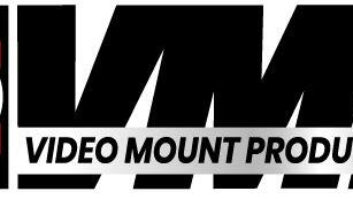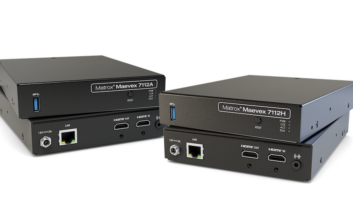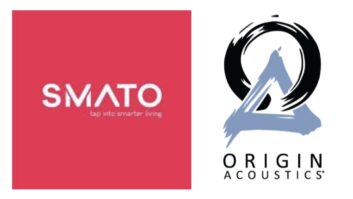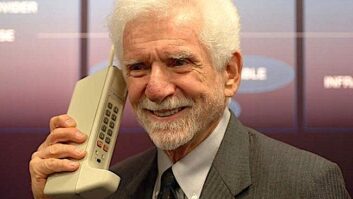By Joseph PalencharTWICE: How did various product categories perform in 2005, and what are their prospects for 2006?
Sylvester: Distributed audio was up 10 percent, and we suspect that number will continue to climb. Distributed video is a very strong category, which we expect will continue to grow with the onset of media storage devices, such as the iPod video player. The industry is definitely primed for today’s video revolution.
As always, in-ceiling speakers continue to outpace in-wall designs. A lot of that has to do with the fact that in-ceiling designs are more out of the way of furniture and wall decorations. In-ceiling designs also seem to be the solution of choice in home-theater setups. Bottom line, the category will continue to grow as more specific designs are created and improved.
We’re seeing tremendous growth in dedicated distributed-audio multizone receivers (for example, with eight or more channels of built-in amplification), both vertically and horizontally, as many brands are now offering different models at different price points. Even traditionally high-end companies are now entering the entry-level segment.
Ethernet-based home-control systems are the obvious future of this industry. The business model will be similar to what Microsoft did in the computer realm, allowing multiple companies, such as Dell, to make the hardware. But this market is wide open, and I predict companies like Apple will pose a great challenge to Microsoft as far as software dominance.
Ethernet-based A/V distribution, on the other hand, will grow, but there will be limitations to its growth.
The growth of wireless control and wireless distribution of audio and video content, will be paced by improvements made to wireless technology. This is a market that must deal with reliability issues.
Bente: In distributed audio, we were up at least 25 percent, and this is at the high end, where we have an extremely strong presence. I know a flood of lower-cost systems came to market in 2005 and, at least from industry figures, the entire segment grew more than 30 percent.
Distributed video is getting more important every day but is still slow in uptake. We have observed modest growth at the very high end only. We do know, however, that the consumer feels this is a very important area for future systems, and we plan to incorporate distributed-video functionality in many new products that we will introduce in 2006 and 2007. In architectural speakers, we recorded huge growth for in-ceiling speakers, and we know that this was the case for the entire industry in 2005. Many consumers have indicated their preference for in-ceiling rather than in-wall speakers.
Our in-ceiling business is booming, and we have plans that call for even bigger growth in the next few years. Even the use of in-ceiling speakers for home theater is showing big gains. Few speakers perform optimally in this application, but we are bringing a specialized line to market in 2006 that gets much closer to real theater performance.
As for dedicated distributed-audio multizone receivers, more of our A/V receivers will come with this feature on board. A large percentage of our current receivers feature multiroom/multizone functionality, and he next generation will incorporate even more of this capability.
Detmer: Distributed audio grew immensely in 2005 and will grow even faster in 2006 due to the iPod and satellite radio craze. Modern distributed-audio systems that include keypad control have become easier to use, and there is a high customer satisfaction quotient related to sound outdoors via high performance weatherproof loudspeakers.
In speakers, the trend is clearly toward in-ceiling product. Customers prefer the aesthetics associated with ceiling loudspeakers over in-wall models, and advanced technologies such as the Niles DS Directed Soundfield, which home theater sound that rivals the best in-wall models from unobtrusive ceiling locations.
As for dedicated distributed-audio multizone receivers, just wait to see the innovative models that our industry will deliver in 2006. Customers are clamoring to have all of the popular sources (like iPod and satellite radio) with all the metadata to navigate these menu-driven sources available at the push of a button in every room of their house.
Customers want the same satellite radio programming at home as they have in their cars, and in 2005 we saw stand-alone home satellite tuners become incorporated into distributed audio systems. In 2006, we will see satellite radio become incorporated into distributed-audio components such as the Niles GXR2 modular multizone receiver, which can accept any combination of up to six XM or Sirius satellite radio input modules.
IP-based control systems will dominate because of the wide range of information that they can carry and because of increased reliability. Low-voltage residential systems that will gravitate to this technology will likely include alarms (burglar, fire and medical), doorbell/intercom, home theater control, keyless entry systems, lighting, sound and video distribution, surveillance and telephone.
As for wireless, the robust nature of wireless RF technology like Zigbee will enable total freedom to control a wide variety of systems.
Baron: CEA data shows that YTD in-wall and in-ceiling speakers for all uses increased 19 percent [through September] over 2004 with in-ceiling representing 66 percent of the category. This trend is likely to continue as more MRAV systems are installed as unobtrusively as possible. In-wall speakers enjoy higher average selling prices than in-ceiling speakers, probably because a higher percentage of them are used for home theater.
Housing starts will be lower in ’06, but that will be counterbalanced with more builders embracing MRAV. Builders will have greater incentive to add extras such as MRAV and built-in home theater to each home sale to counterbalance the drop in unit home volume. Rising interest rates will likely slow down home renovations, but we’re looking for a slowing of the growth rate, not a real decline in MRAV and flush-mount speaker sales.
Satellite radio subscriptions continue to grow at a meteoric rate, and we expect that trend to continue. It is part of the larger trend for people to want their music of choice where they want it — and that seems to be everywhere. So it is no wonder that people are asking for satellite radio in their MRAV systems.
New whole-house antenna solutions will make it easier than ever before for integrators to add XM Satellite Radio into homes.
Of all the new developments in the custom business, IP is the technology that excites us the most. Internet Protocol audio distribution systems such as the NetStreams’s DigiLinx make it possible to have better audio fidelity, greater convenience and usability as well as make installation and set-up easier. And that’s a win/win for consumers and installers. Because IP is a universal standard, it allows seamless integration of wide variety of products from a wide variety of manufacturers, delivering elegantly simple, robust, and scalable entertainment and home control systems.
Jacobs: There is growing interest in distributed audio as homeowners begin to better understand the benefits and value. Sales of this product are anticipated to grow at an ever-increasing pace as distributed audio becomes more of a standard feature in semi-custom and custom homes.
Weissburg: Distributed audio will continue to grow based on the popularity of multiroom-system capability in A/V receivers and wireless technology. In distributed video, we are having a record year with Escient and anticipate continued steady growth in audio and video media servers and managers. The products are more affordable, and consumers are beginning to understand and appreciate the ease of use and functionality of the product concept. A case of technology that meets a need in the market for everyone.
In-wall and in-ceiling speaker business has been terrific, and it’s being driven by the many application products in the market today. Hidden theater, in-wall and on-wall speakers, high-quality in-ceiling and outdoor speakers will continue to grow. Consumers are now demanding great sound in applications not thought possible a few years ago. With brands like Boston Acoustics, it’s now possible to create the high-end home theater experience without the need for traditional design loudspeakers.
Kussard: Distributed audio is notably up, and we expect it to continue. We expect distributed video to gain in importance. In speakers, in-ceiling dominates, and we expect it to remain so. In HDD music servers, we’re in the category less than a year in the category, but it’s ahead of expectations. Too many variables to predict the future of this category. Home satellite radio is strong and getting stronger. HD radio may impact the future of pay services here.












